Megan Gannon
Source - http://www.livescience.com/52527-photos-antiochia-ruins.html
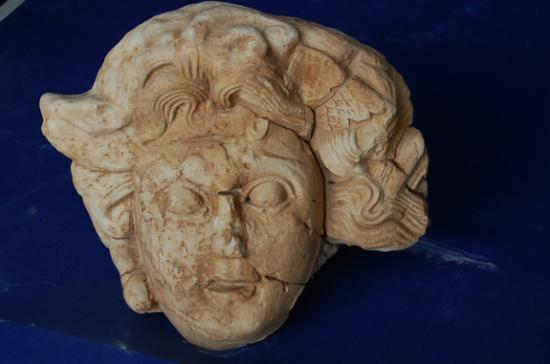 Hoff thinks that during the Christian era many Roman sculptural elements at Antiochia like the Medusa head would have been destined for the kiln; Christians who took over the site smashed artworks considered idolatrous and turned them into mortar. (Credit: Michael Hoff, Hixson-Lied professor of art history, University of Nebraska-Lincoln.)
Hoff thinks that during the Christian era many Roman sculptural elements at Antiochia like the Medusa head would have been destined for the kiln; Christians who took over the site smashed artworks considered idolatrous and turned them into mortar. (Credit: Michael Hoff, Hixson-Lied professor of art history, University of Nebraska-Lincoln.)
In the ruins of a Roman city in southern Turkey, archaeologists have discovered a marble head of Medusa, somehow spared during an early Christian campaign against pagan art.
The head was unearthed at Antiochia ad Cragum, a city founded during the first century, around the rule of Emperor Nero, that has all the marks of a Roman outpost —bathhouses, shops, colonnaded streets, mosaics and a local council house.
With serpents for hair, wide eyes and an open mouth, Medusa was a mythical monster who could turn a person to stone with her gaze. At Antiochia, a Medusa architectural sculpture would have served an apotropaic function, intended to avert evil —but later, her likeness would have been considered idolatrous by the Christians who came to live at the site.
Digital recreation
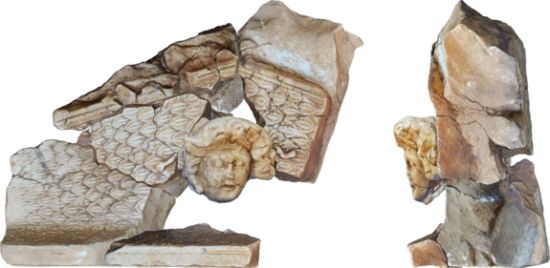 The Medusa head would not have been part of a statue. Instead, it was part of the architecture in one of the city’s buildings, likely a temple. Here, fragments of the Medusa pediment have been pieced together using 3-D photogrammetry techniques (Credit: Philip Sapirstein, assistant professor of art history at the University of Nebraska-Lincoln.)
The Medusa head would not have been part of a statue. Instead, it was part of the architecture in one of the city’s buildings, likely a temple. Here, fragments of the Medusa pediment have been pieced together using 3-D photogrammetry techniques (Credit: Philip Sapirstein, assistant professor of art history at the University of Nebraska-Lincoln.)
Piecing together the puzzle
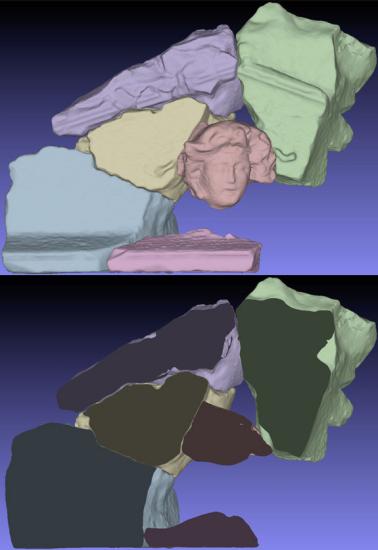 3D models helped the researchers figure out how the Medusa head joined with several other marble fragments to form a pediment. (Credit: Philip Sapirstein, University of Nebraska-Lincoln.)
3D models helped the researchers figure out how the Medusa head joined with several other marble fragments to form a pediment. (Credit: Philip Sapirstein, University of Nebraska-Lincoln.)
The treasure trove
 The dig where the statue head was found as seen from above. (Credit: Michael Hoff, Hixson-Lied professor of art history, University of Nebraska-Lincoln.)
The dig where the statue head was found as seen from above. (Credit: Michael Hoff, Hixson-Lied professor of art history, University of Nebraska-Lincoln.)
An important realization
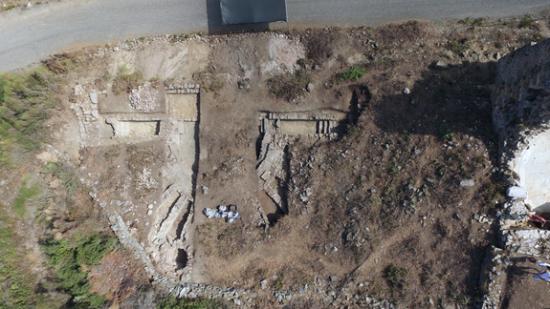 During the 2015 excavations at Antiochia, archaeologists also found the first hints of a bouletarian, or city council house, that may have doubled as a theater or music hall. (Credit: Michael Hoff, Hixson-Lied professor of art history, University of Nebraska-Lincoln.)
During the 2015 excavations at Antiochia, archaeologists also found the first hints of a bouletarian, or city council house, that may have doubled as a theater or music hall. (Credit: Michael Hoff, Hixson-Lied professor of art history, University of Nebraska-Lincoln.)
A rare find
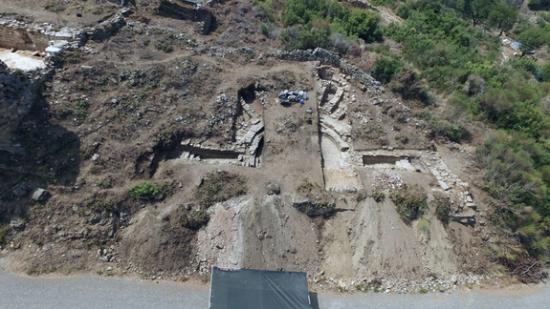 The team hopes to excavate more of the bouletarian next year. But so far their test trenches have revealed a curved marble bench, supports for wooden seats and a marble-paved orchestra. (Credit: Michael Hoff, Hixson-Lied professor of art history, University of Nebraska-Lincoln.
The team hopes to excavate more of the bouletarian next year. But so far their test trenches have revealed a curved marble bench, supports for wooden seats and a marble-paved orchestra. (Credit: Michael Hoff, Hixson-Lied professor of art history, University of Nebraska-Lincoln.